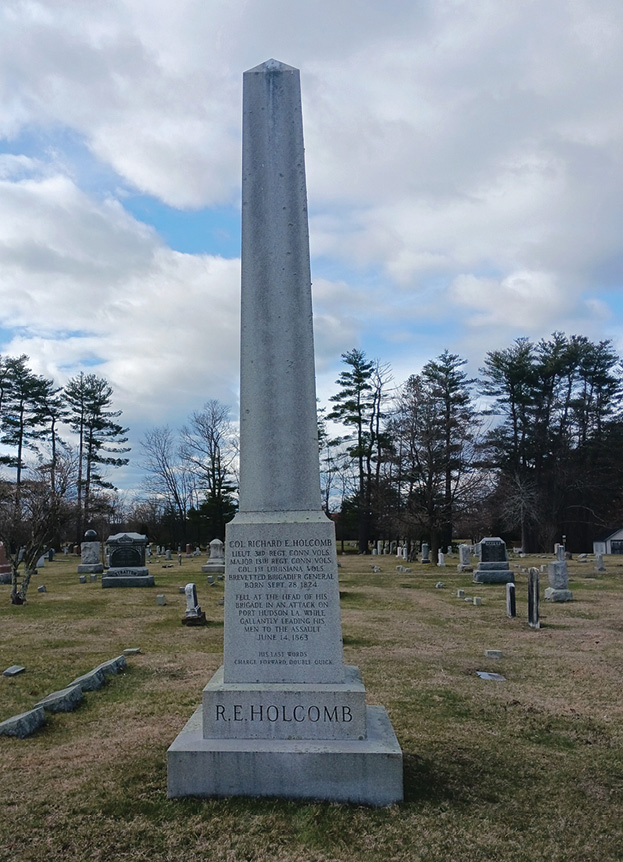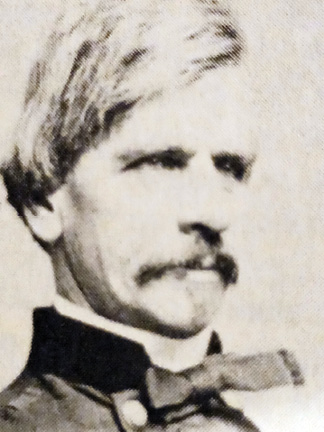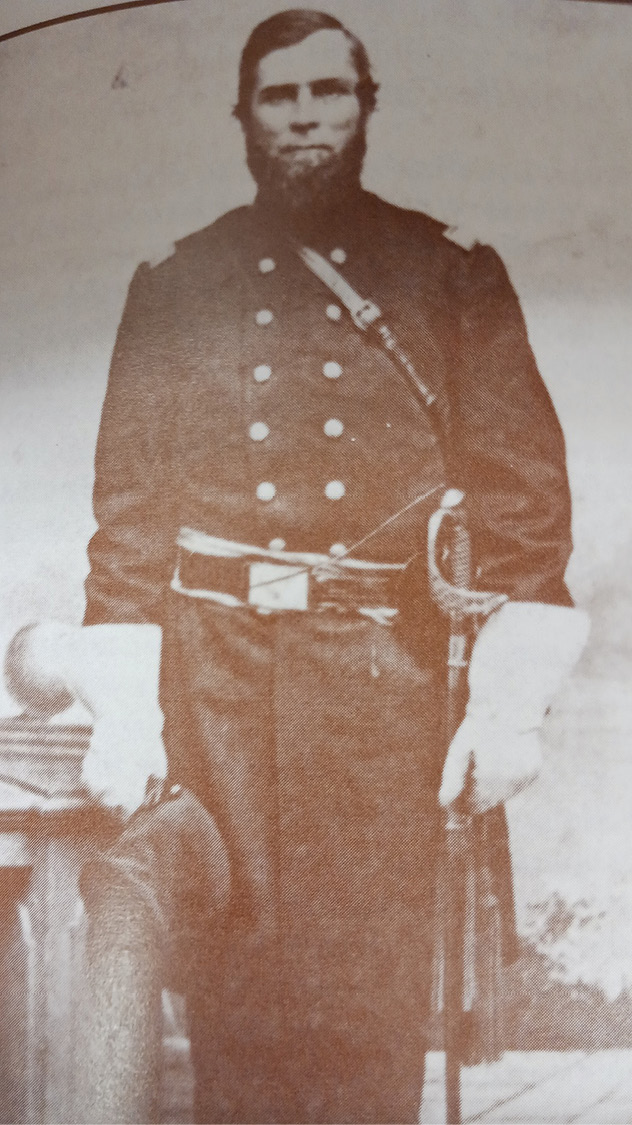
On a walk through the Granby Cemetery in Section A, you may notice a monument that’s nearly 15 feet tall. This monument belongs to Richard E. Holcomb, a Granby Civil War hero killed at Port Hudson, La. on June 14, 1863.
Holcomb was born near the Turkey Hills section and later moved to Hartford Ave. He was a bright and ambitious man who became an engineer and surveyor. Most of his work took him away from home. He spent nine years building the Panama Railroad and spent some time building the Savannah Bridge over Georgia’s Savannah River. He married in 1853 and had four children. Of the ten years he was married, it’s estimated he spent less than four years with his family.
Holcomb believed strongly in his country and was angered by the South’s secession from the Union. It prompted him to enlist in the Army for three months. He re-enlisted multiple times, each time getting a new rank and more money. Serving with the Connecticut 13th Volunteers, he went to Port Hudson, La. to help repossess the Mississippi River where the South was receiving goods from the west. Control of the Mississippi allowed the North to cut off its supplies. Holcomb arrived in Louisiana as colonel in command of the 1st Louisiana Volunteers, many of them Southerners who opposed their state’s actions and miscreants who joined for the pay and food.
At the war’s outset, President Lincoln needed commanders. Unfortunately for Lincoln, many of the first-rate West Point graduates were fighting for the South. Lincoln appointed several politicians without military backgrounds as generals. Many were Democrats in the hopes he could persuade the opposition party to support the war. Three such generals were Nathaniel Banks, Benjamin Butler and Dan Sickles.

Among Banks’ first battles was the Shenandoah Valley, where his attempt to trap Stonewall Jackson was outmaneuvered. A few months later, Banks and Jackson tangled again at Cedar Mountain and Banks was defeated again. The public was furious and wanted him out. Lincoln took the heat and sent Banks to Port Hudson in command of 35,000 troops. One of his subordinates was Richard Holcomb.
The Port Hudson Battle was a 48-day siege, from May 13 to July 8. Banks’ 35,000 troops surrounded General Gardner’s 7,000 troops along the Mississippi River. The Union Navy fired mortars at the Southern troops from the Mississippi and Banks led the ground assault from the other side. On May 27, Banks ordered an attack and the battle lasted 12 hours but the ground forces were unable to advance and penetrate the Confederates. Despite heavy casualties, Banks was determined to win to avoid being embarrassed as he had been against Jackson.
The second attack came on June 14, 1863, and Colonel Holcomb was ready to lead his troops. Holcomb had been in combat before and found it exhilarating. He was determined to beat the South, but as he led his troops into battle, he was shot in the back and killed, presumably by friendly fire.
Holcomb was one of 4,500 Northern casualties in Banks’ Port Hudson Battle compared to the South’s 900. Banks planned to attack again the following month, but the Union’s win at Gettysburg and, a day later, the fall of Vicksburg, were the turning point of the war.
Despite the heavy casualties Banks suffered in two battles, he gained one victory when General Gardner surrendered to him on July 8, 1863, in a skirmish following Gettysburg. Banks was assigned to capture Shreveport, La. on the Red River. But 40 miles south of Shreveport, he engaged with Confederate troops led by General Taylor and lost the battle. Banks retreated, Taylor pursued him and they clashed at Blair’s Landing. This time Banks won the skirmish. Then Grant ordered him to return for an attack on Mobile, Ala. Banks was deterred because the water level of the Red River had fallen to three feet and his ships needed at least seven feet to get to Port Hudson and the Mississippi River. Lt. Col. Joseph Bailey, an engineer, started to build a dam to raise the water level; two weeks passed and Grant’s attack on Mobile was delayed.
After Banks’ defeat on the Red River, Lincoln could no longer ignore public outcry. Banks resigned and resumed his role as a U.S. Representative for Massachusetts. Banks had administrative and communication skills, but he lacked the military skills and training to effectively lead his troops. His ineptitude resulted in thousands of deaths, including that of Colonel Richard E. Holcomb.
To learn more about Colonel Richard Holcomb or other Granby soldiers, become a member by calling 860-653-9713 or go online at salmonbrookhistoricalsociety.com
